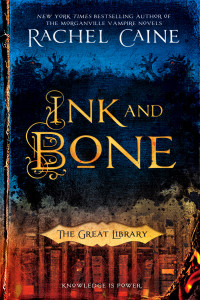
SW: This book utilizes themes from many different genres. When you were planning the book, did you know you were going to create a cross-genre work or did that happen as you wrote it?
RC: I generally don’t think about what slot a story will fit into, to be honest (sometimes to my detriment!). I tell the story as it unfolds for me, and almost all of my stories end up being cross-genre in some way or other. In fact, when I was writing the proposal for the Weather Warden series that landed in Urban Fantasy, that was also cross-genre–magic, in a contemporary world? MADNESS! Dogs and cats, living together! It just so happened that Urban Fantasy became its own defined genre about that time. (Lucky!) I read across genres regularly, so cross-genre stories seem fun and interesting to me.
SW: Recently, I’ve read several online articles relating to Harry Potter and JK Rowling’s work in which some adult readers worry that children can’t handle the number of deaths in her work. You, also, have some tragedy in which children die. What is your thought on this?
RC: I think adults can’t handle the idea of children reading about death. We live in a multimedia-saturated world in which even quite young children have seen a great deal of visual depictions of violence and death–and, in a world where the news constantly carries stories of war, terrorism and death, I think it’s all but impossible to avoid, and yet devoid of real context and empathy. Young adult fiction exists, in no small part, to introduce young people to problems, concepts and issues that they may NOT face in their lives, so that they can begin to understand them and form their own responses to them before they have to deal with it in an immediate, traumatic, and inescapable way. Novels have a unique ability to place the reader not just in the situation, but in the mind of the person, not just the situation. They convey, and teach, empathy.
I understand the protective impulse, but I think it’s wrong. Why not use a book that children might be uncomfortable reading as an opportunity to have a discussion about those issues, and fully explore them? SW: I was struck by the fact that the name Jess could be a female name or a male name. Was there any consideration to making the main protagonist a girl?
I didn’t decide on Jess’s gender until the very last minute. Rather than base characters on gender, I like to think more about what they do, what they face, where they come from, and where they’re going.
In this case, when I looked at everything, I had a clearer idea for Jess’s voice as belonging a boy than I did as a girl (I wrote it both ways, experimentally). You’ll notice that Morgan is also a name that could be assigned to either a boy or girl.
I also probably favored Jess as a boy a bit more because I’m breaking the mold I’ve had for many books now of female POV characters. It’s a nice stretch for me as a writer.
SW: You are very deliberate about bringing together many characters of different nationalities and cultures. I am assuming this was an important part of the book for you, to show this international representation?
RC: It is important to me, but it was also practical for the story. The Great Library exists in every country in the world … and that being said, it would draw the best minds from across the globe, regardless of nationality, religion, sex, disabilities–any consideration you could name. It would have been artificial, I think, not to make it a diverse landscape of people!
SW: Have you read Jim C. Hines’ books? He also deals with the power of the printing press, although in a completely different way.
I love Jim’s books! I hadn’t actually thought much about that, because I was thinking about the press as a plot point, when the book was really about the library (or about the internet vs. paper), but yeah, cool! I get a lot of people talking about the TV show THE LIBRARIAN, too. And Genevieve Cogman has a book out called THE INVISIBLE LIBRARY as well. Maybe we’ll put together a sub-genre! Librarypunk!
Thanks so much for the questions! I truly appreciate it, and I hope you enjoyed the book!
Thank you SO MUCH for being with me on SlipperyWords! And I loved the book!




Pingback: Librarypunk: The New Thing | Slippery Words